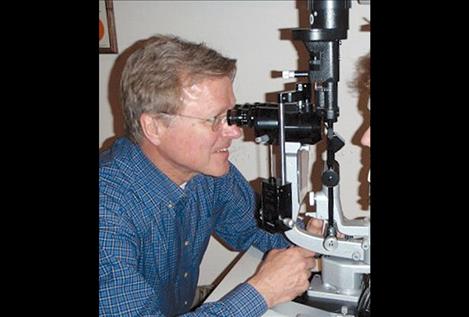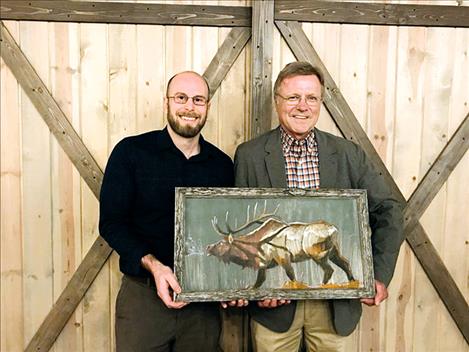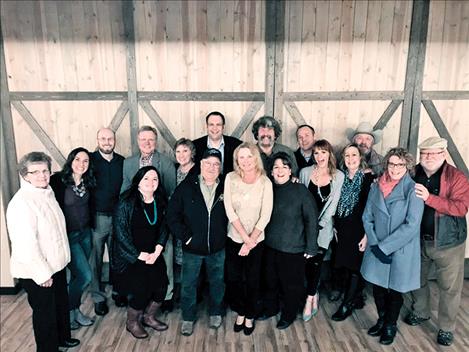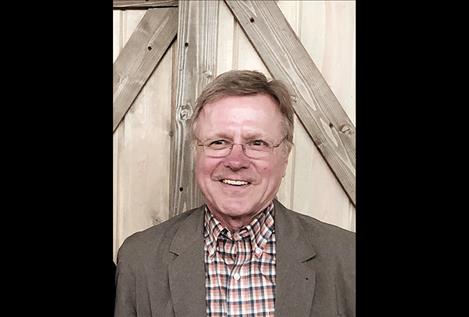Local eye doctor retires after 47 years of restoring sight
Hey savvy news reader! Thanks for choosing local.
You are now reading
3 of 3 free articles.
RONAN – Dr. Jim Ofstad’s career as an optometrist in Ronan changed drastically since he started seeing patients in 1972.
When he retired from Ronan Eye Clinic in December he was seeing patients in a large building that he designed himself, working with a broad team and seeing patients from all over the area, but it wasn’t always that way. The first year he treated patients in Ronan Ofstad worked alone and saw patients in an old bar that had gone out of business.
“They took sheets and stapled them to the ceiling for my exam room,” he said. “It still had the bar lights.”
Ofstad grew up in Seattle and attended Pacific University in Oregon for both his bachelor’s degree in physics and his doctorate in optometry. While standing in line to take the exam that would certify him to practice as an optometrist, Ofstad struck up a conversation with a man who had recently finished a stint working for the Indian Health Service in Montana. Interested in the adventurous lifestyle of a traveling optometrist, Ofstad pursued a job with IHS.
A few months later, in September of 1971, Ofstad started working as a commission officer in the United States Public Health Service for IHS based in Billings. During his two years in the position, Ofstad traveled to all the reservations on the Hi-Line, providing eye care to many who had never had access to such services. He spent the school day doing eye exams for children and then saw adults when the children went home. He worked long hours, moving from community to community, treating patients.
After finishing his stint as a commission officer, Ofstad did contract work for the Blackfeet Tribe and Confederated Salish and Kootenai Tribes. During this time he fell in love with the landscape and community in the Ronan area and decided to permanently settle. Ronan Eye Clinic opened in 1973.
Arlene Starkel started working as Ofstad’s office manager four years after he started the clinic. At the time, he saw patients two days a week at the clinic. Starkel said she spread the word about Ronan Eye Clinic.
“Pretty soon I had him working nine to four, then four days a week,” Starkel said. The clinic grew steadily after that, prompting Starkel to hire more employees to support the administrative needs of the business. Starkel worked with Ofstad for 38 years.
In 1973, Ofstad bought property on Hellroaring Road outside of Polson. He learned carpentry skills so he could build a home for himself on the property. He and his wife, Debbie, still live there today.
In the early years of his practice, Ofstad used creative business solutions. His current hobby, Native American style flute making, arose from one unconventional transaction with a patient. Ofstad provided treatment for a member of the Ronan community. When it came time for the woman to pay for his services, she said she would compensate him with a handmade Native American flute and Ofstad accepted. The flute inspired him to build his own instruments in a similar style. Ofstad said he looks forward to building and playing his collection of hardwood flutes during retirement.
In 2000, Ofstad worked closely with local architects and contractors to design a new location for the business, located on Main Street near the St. Luke Community Healthcare hospital. He intentionally relocated close to the hospital so that patients could easily be seen at the hospital for eye conditions that were related to other aspects of their health.
Ofstad sold his business to optometrist Dr. Marcus Simonich in 2012. Simonich had been working part time at Ronan Eye Clinic for several years and the two shared a commitment to high-quality eye care. They also, coincidentally, share a birthday. Ofstad continued to work part time for Simonich for several years.
According to the current Ronan Eye Clinic optician and billing specialist, Joyce Cummings, Ofstad’s approach to optometry was down to earth and patient-centered. She said his commitment to staying abreast of all the latest technological advances in the field of optometry ensured that patients got the best possible care.
While Ofstad is no longer available to see patients, Cummings said Simonich and his team continue to provide the same cutting-edge care on which Ofstad founded his practice.
Ofstad said he enjoyed helping people find solutions to their eye conditions. He said the diversity of the people he’s formed relationships with over the years was the highlight of his career. “You learn to communicate well with people and you get comfortable with each other,” he said. “That’s the big deal that I miss the most.”
With the closest large eye care clinics in Missoula and Kalispell, Ofstad provided medical eye care so that patients could get immediate, local care. The office treats glaucoma and performs minor in-office medical procedures. Ofstad was trained to detect medical conditions that show symptoms in the eyes. “He saved a lot of peoples’ eyes and lives,” Starkel said.
Simonich said Ofstad also played a role in changing the landscape of the field of optometry in Montana. When he graduated from optometry school, an optometrist’s primary job was to fit people with glasses. Regulations limited the amount of medical diagnostic work an optometrist could do. According to Simonich, Ofstad advocated for a medial approach to optometry. Ofstad worked with other Montana optometrists to secure the right to dilate eyes and do other diagnostic tests.
“He moved optometry toward a more medically based profession, which means we can detect more ocular diseases,” Simonich said. The ability to provide medical treatment to patients was especially important to Ofstad because his patients didn’t have access to alternative medical care available in urban areas.
The Ofstads have three sons. Their son Tyler will be following in his father’s footsteps when he begins working as a vitreoretinal surgeon in Kalispell this summer.
Ofstad looks back on his career with the same enthusiastic curiosity that brought him to Montana as a young eye doctor. “There were some incredible adventures we had,” he said.



















